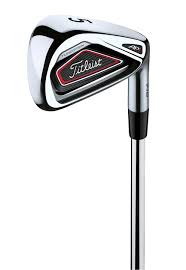 Titleist has updated their AP1 line with the new 716 AP1 irons as their longest, most forgiving iron ever. The new 716 AP1 design has an unsupported face made of heat treated 17-4 stainless steel that provides more flex for faster ball speed. More high density tungsten in the toe than previous models lowers the center of gravity, improves MOI and increases launch angle. The 716 AP1 line includes a new high launching True Temper XP90 staft. Let’s take a look and see how it performs.
Titleist has updated their AP1 line with the new 716 AP1 irons as their longest, most forgiving iron ever. The new 716 AP1 design has an unsupported face made of heat treated 17-4 stainless steel that provides more flex for faster ball speed. More high density tungsten in the toe than previous models lowers the center of gravity, improves MOI and increases launch angle. The 716 AP1 line includes a new high launching True Temper XP90 staft. Let’s take a look and see how it performs.
Technology and Design
Titleist has long been known to produce excellent players’ irons. Their first game improvement irons were the DCI line, which had deep cavities to promote higher launch and more forgiveness. Titleist’s first multi-material iron heads, the AP1 and AP2 were launched in 2008 adding tungsten weighting to lower center of gravity, increase MOI (moment of inertia) and added polymers to refine the feel on impact.
Titleist created the AP1, reviewed here, as a forgiving game improvement iron with higher launch and smoother turf interaction. The original AP1 was a dual cavity design with a bar that ran horizontally across the face, supporting the face and joining it to the back of the head. This was necessary because the head material was not strong enough to be unsupported as in a metal wood or hybrid head. Refinements from the 710 to the 714 models included revised weighting and polymers for better performance, but the bar remained.
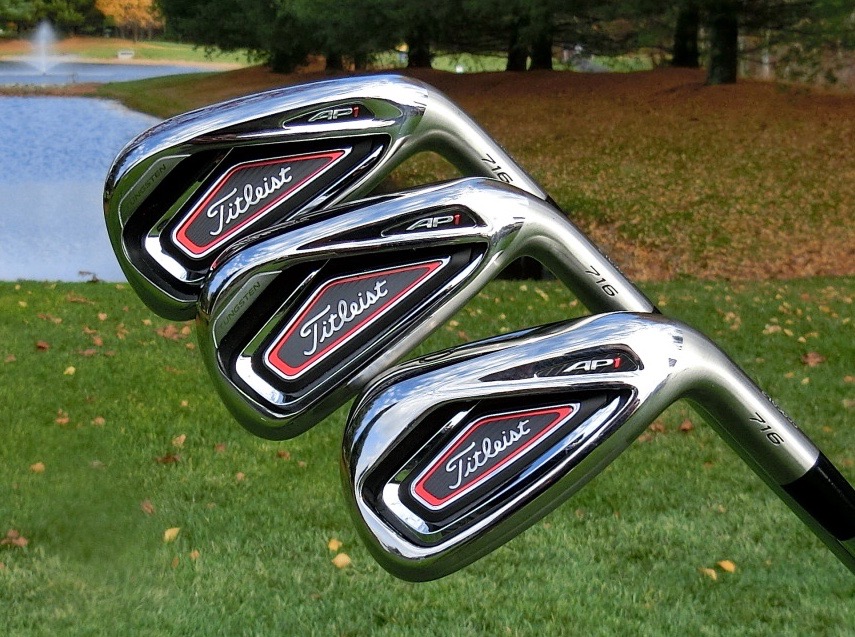 The Titleist 716 AP1 4, 7-iron and PW
The Titleist 716 AP1 4, 7-iron and PW
To create their first unsupported face, Titleist used stronger 17-4 stainless steel with localized heat treatment to aid in bending and improve strength. What is an unsupported face, and why is it desired for a game improvement head? In a metal wood or most hybrids, the face is supported by the sole, crown and sides. The face can be made thinner to increase COR, the trampoline effect, which delivers faster ball speed.
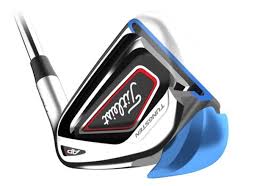 For an iron, the face can only be connected to the sole of the head. Deep cavity back iron heads had to have thicker faces for strength. For thinner faces, a connection was necessary or the material had to be super strong. Titleist solved this by using 17-4 Stainless Steel and heat treatment. The cutaway drawing above from Titleist shows the 360 degree undercut cavity and position of the tungsten in the toe. From the Titleist 716 AP1 page:
For an iron, the face can only be connected to the sole of the head. Deep cavity back iron heads had to have thicker faces for strength. For thinner faces, a connection was necessary or the material had to be super strong. Titleist solved this by using 17-4 Stainless Steel and heat treatment. The cutaway drawing above from Titleist shows the 360 degree undercut cavity and position of the tungsten in the toe. From the Titleist 716 AP1 page:
An extreme 360° undercut cavity creates a large, thin unsupported face that increases both speed and launch for more distance. High density tungsten drives the center of gravity low allowing stronger lofts to create even more speed and more distance.
The use of extreme high density tungsten moves weight to the perimeter increasing moment of inertia on off-center hits. 716 AP1 irons are the most forgiving among irons of similar size.
Titleist also increased the amount of tungsten in the 716 AP1 head by 50%. This lowers the center of gravity even more and improves MOI (moment of inertia). Improved MOI means more resistance to the head twisting on off center hits. Less energy is lost on off center contact and therefore less distance is lost. By using more tungsten, Titleist can also keep the head blade length the same as previous models.
Specifications
Because the new 716 AP1 launches higher, Titleist lowered the lofts to keep the same launch angle. It is misconception that companies lower the club loft to get more distance through lower launch and more roll out. If a head has a lower center of gravity and launches higher, companies like Titleist lower the head loft to get the same optimum launch angle. More distance comes from faster ball speeds, which will give more carry.
Test Specifications
Club Loft Lie Length Offset Swing Weight ---- ---- --- ------ ------ ------------ 3I 19° 60.0° 39.00" .236" D1 4I 22° 61.0° 38.50" .209" D1 5I 25° 62.0° 38.00" .177" D1 6I 28° 62.5° 37.50" .157" D1 7I 31° 63.0° 37.00" .137" D1 8I 35° 63.5° 36.50" .118" D1 9I 39° 64.0° 36.00" .110" D1 PW 43° 64.0° 35.75" .098" D1 W1 47° 64.0° 35.50" .091" D1 W2 52° 64.0° 35.50" .091" D1
Note: Length and lie are standard for all Titleist irons. The 716 AP1 do not have longer shafts.
Shafts
True Temper XP90 in R300 and S300 Flex for Mid/High Launch
MRC KuroKage TiNi 65 in A, R and S Flex for High Launch
MRC KuroKage TiNi 50 in Ladies Flex for High Launch
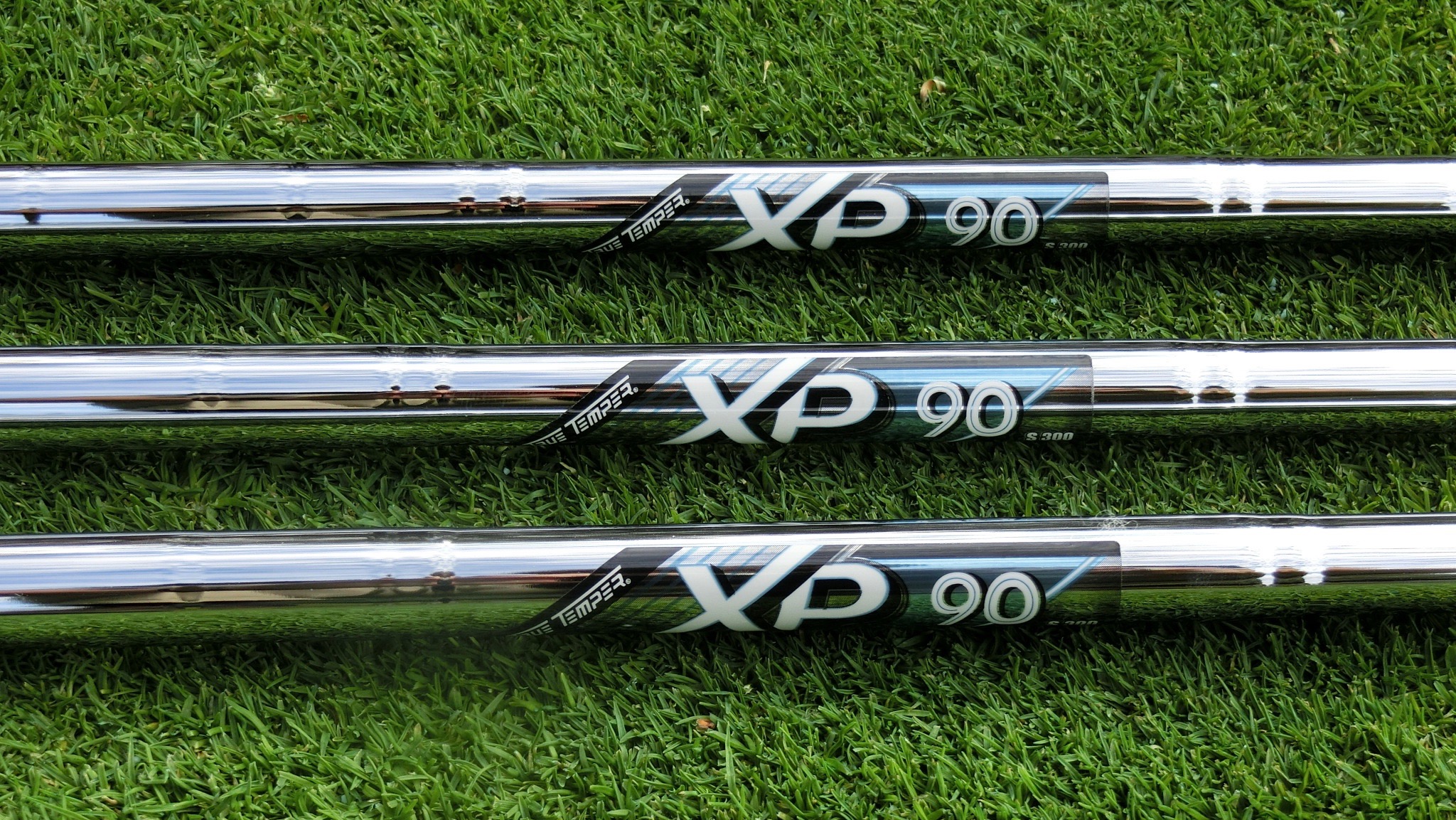
XP 90 Stiff Shafts from True Temper
Esthetics
I have to say that I wasn’t much of a fan of previous versions of the AP1. They tended to look boxy and a bit dull to me. This version, however, has more appeal. The angled lines on the back with dark interior has a visually striking contrast. The red accent on the badge is a nice highlight. They have moved away from the cavity line being parallel to the sole. This draws your eye to the cavity and shows the face being unsupported, which I gather was their design intent. You can also see from the photo below that the cavity depth is progressive. The 4-iron has a wider cavity that reduces down through the set to the pitching wedge and gap wedges.
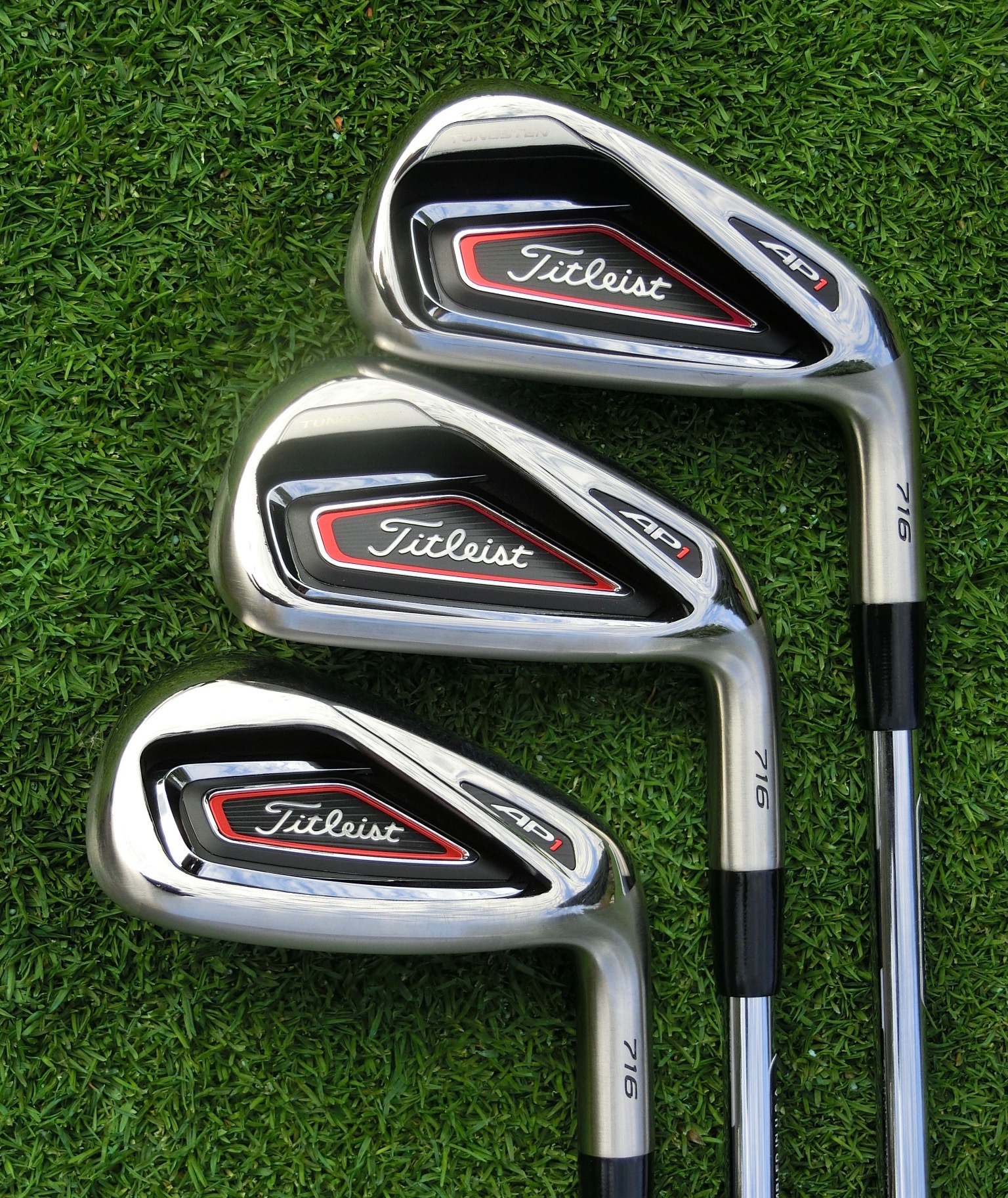 A progressively wider cavity increases launch angle through the set.
A progressively wider cavity increases launch angle through the set.
The top line is a bit thicker at address than the AP2, which I have been playing. But it is not as noticeable when the two clubs are not side by side. The satin finish on the top line and hosel, as well as the face, eliminates glare and gives an elegant look.
Titleist improved the sole with a pre-worn leading edge and camber across the sole. The sole is wider than the AP2 with a gentle curve from front to back. The sole camber can be seen on the PW sole below. The red accents around “Titleist” and on the “1” in the AP1 emblem sharpen the overall look of the back of the club.
The grips were the standard Titleist grip which are very similar to Golf Pride Tour Velvet. It is a good tacky feel in dry weather, but I prefer a chord style grip or similar for wet or humid weather.
Performance
Titleist sent me the 716 AP1 4-iron, 7-iron and pitching wedge, PW, to test out. I have been playing the Titleist 714 AP2 irons with TT XP95 stiff shafts for one and a half seasons. I had Mizuno cavity backs prior to that. I must tell you that my distance is not increasing or even staying the same anymore at my ripe old age of 55. My 7-iron used to be my reliable 150 club. I could carry 145 to 150 and get 150 to 155 at times on a normal lie, flat approach shot or off the tee. But over the last couple of seasons, I have lost about 5 yards or so. This is apparent on one particular par 3 that I play a lot and needs a 145 carry. I have been coming up short every time.
After range testing, which hinted at more distance, the first real test came on the course. I’ve played 6 or 7 rounds with these three clubs replacing my 915H 4-hybrid and my 714 AP2 7-iron and PW. I am getting more distance. That par 3 I mentioned was a great test. It was about 50 degrees out on the day I tested, which doesn’t help distance, but there was little wind. I took my normal swing and easily reached the green. Ball launch angle and height appeared to be the same as my AP2. The ball just carried further, took one or two hops, and stuck to the green.
The pitching wedge was the same. I was getting about 115 on average with my AP2 lately and got 120 with the 716 AP1. Partial wedge shots were longer too, getting a good 5 yards more reliable carry. The other thing I noticed with the PW was that chips and pitches had more speed to them. I used the PW exclusively with short game shots for a couple of rounds. It was quite handy from all lies including using it to chip with a putting style from just off the green. I holed out a chip on a long par 3, which is always fun! The wider sole of the AP1 helps out in rough as well allowing the head to glide through grass. For pitches, the ball launched a bit higher and helped it land softer.
On hard pan or tight lies from the fairway, the wider sole and pre-worn leading edge helped prevent digging in. Full swings still made a nice divot. But short game shots had less of a tendency to dig in when I didn’t get my technique down perfect.
I don’t have the 714 AP2 4-iron, but instead have been playing the Titleist 915H 4-hybrid. The 4-iron didn’t hit as long or high as hybrid, which is understandable. But it did hit well from a few different kind of lies, including light rough. I played one round with just my putter, driver, 5W and the three 716 AP1 clubs to force me into using them for almost all approach shots. I used the 4-iron for a few punch shots under trees (I hooked my drive a few times!) and it pushed the ball a long way. Off the tee, the 4-iron had nice carry and launch.
For all three irons, a center face hit feels like the ball is springing off the face. Off center hits don’t punish your hands either and still get a lot of distance. The AP1 doesn’t have quite the forged feel of a good center hit with the AP2, but the extra distance is very desirable. I did go to a golf store and hit the 716 AP1 against the 716 AP2 and CB models. Again, good hits did feel different, but I got more carry with the AP1.
I spent a session on a launch monitor to confirm the distance. With the 714 AP2 PW I was getting carries of 112 to 120 at most. With the 716 AP1, I was consistently getting 115 to 124. Good hits routinely got 120 and the spin helped the ball stop on a dime. The 7-iron differences were similar. The 714 AP2 was in the 143 to 149 carry range. With the 716 AP1, I was carrying 147 to 154. Launch angles and spin were similar for both tests. The ball speed was higher off the 716 AP1, so carry was farther.
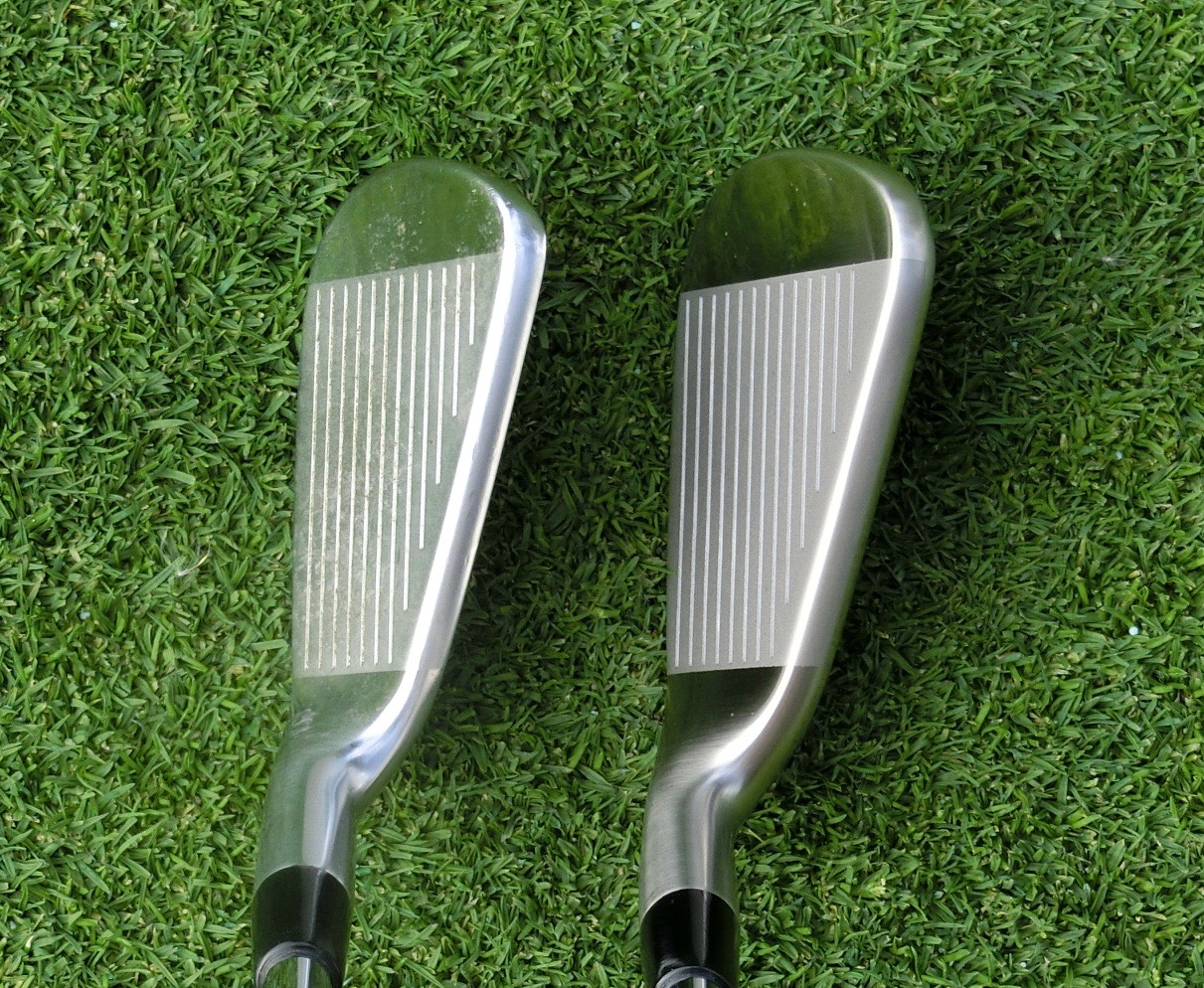
7-iron top lines of my 714 AP2 on the left and the 716 AP1 on the right.
For those who have never hit the True Temper XP line, it feels a lot like the Dynamic Gold SL version, but with higher launch. The butt end feels smooth at impact and the tip feels firm at impact. I play the stiff shafts and would say it is between the feel of a TT Dynamic Gold regular and stiff shaft in terms of stiffness. I’ve also played Nippon 950GH stiff and would say the XP90 is similar to those. The XP90 shafts on the AP1s felt the same as the XP95 on my AP2s.
Conclusion
I like these irons a lot. So much so that I ordered the remainder of the set from Titleist, 5, 6, 8, 9 and the first gap wedge. The 716 AP1 line actually has two gap wedges, W1 and W2. These irons will go in my bag in place of the 714 AP2 because frankly, I could use the distance. The ball flight and spin also give me the same sticking power on approach shots that I got with the 714 AP2, but from about 5 yards further out. So there is really no downside, is there?
I only got one round in with the whole set before Old Man Winter hit New England, which was sad. It was cold and windy, but I had a blast anyway on an empty course. This gave me the opportunity to hit multiple approach shots and really check out how the set works. I used different irons for short game shots using the 8-iron through the gap wedge. The short game is my strength and it was fun to play around with the different irons, but the long game is where I will really see the advantage.
I guess the only reason pros and scratch golfers wouldn’t use these irons is because with their swing speed, the ball would launch too high. But it may be a great replacement for that 3 iron. Titleist has many shaft options to choose from.
Check these irons out. If you are in the warm weather states, find a demo day and take them for a spin. If you are in the cold, cold north, head to your local Titleist retailer and spend some time in a launch monitor and get a feel for them. You can sneak a bit of practice in there too!

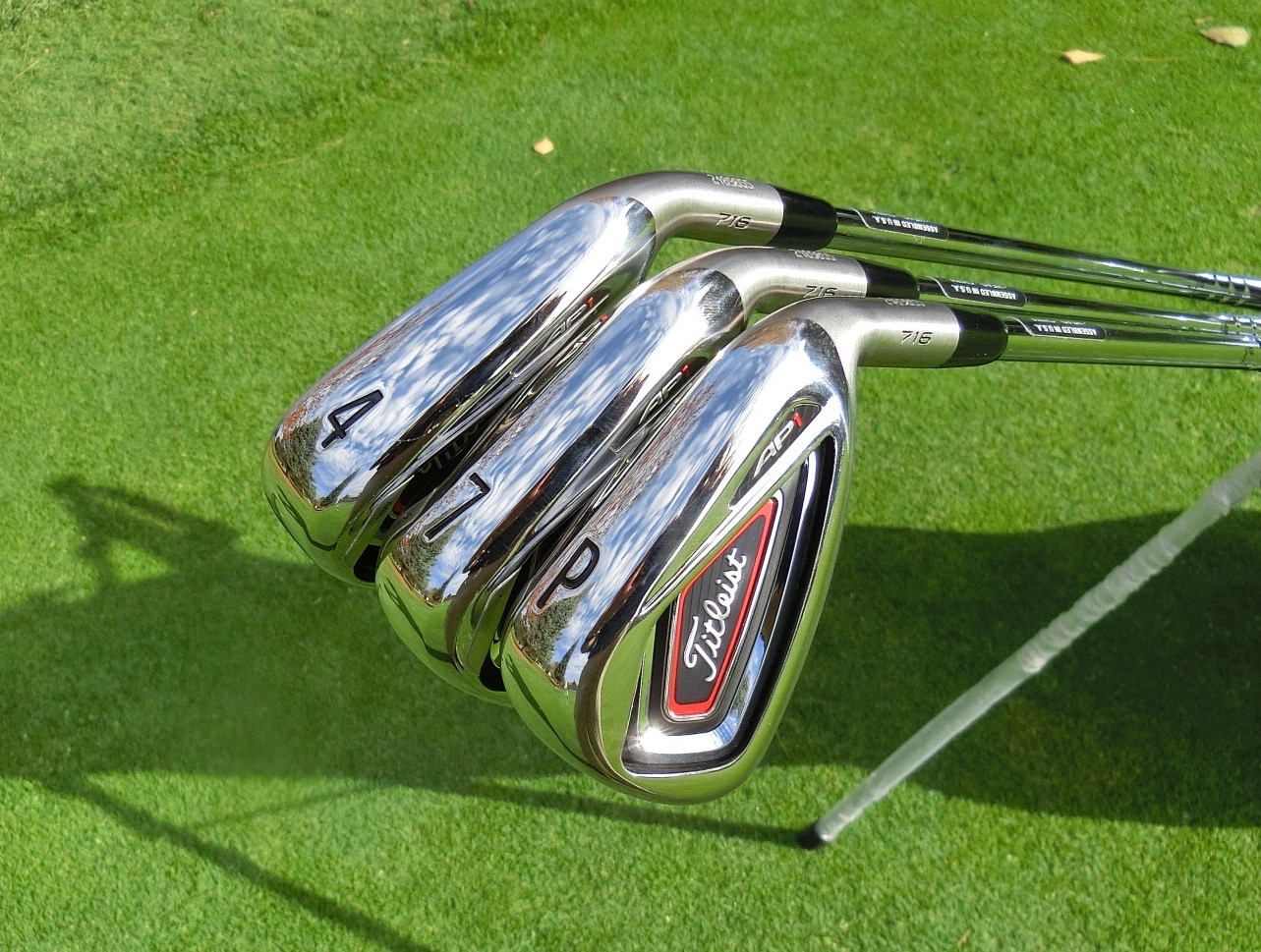
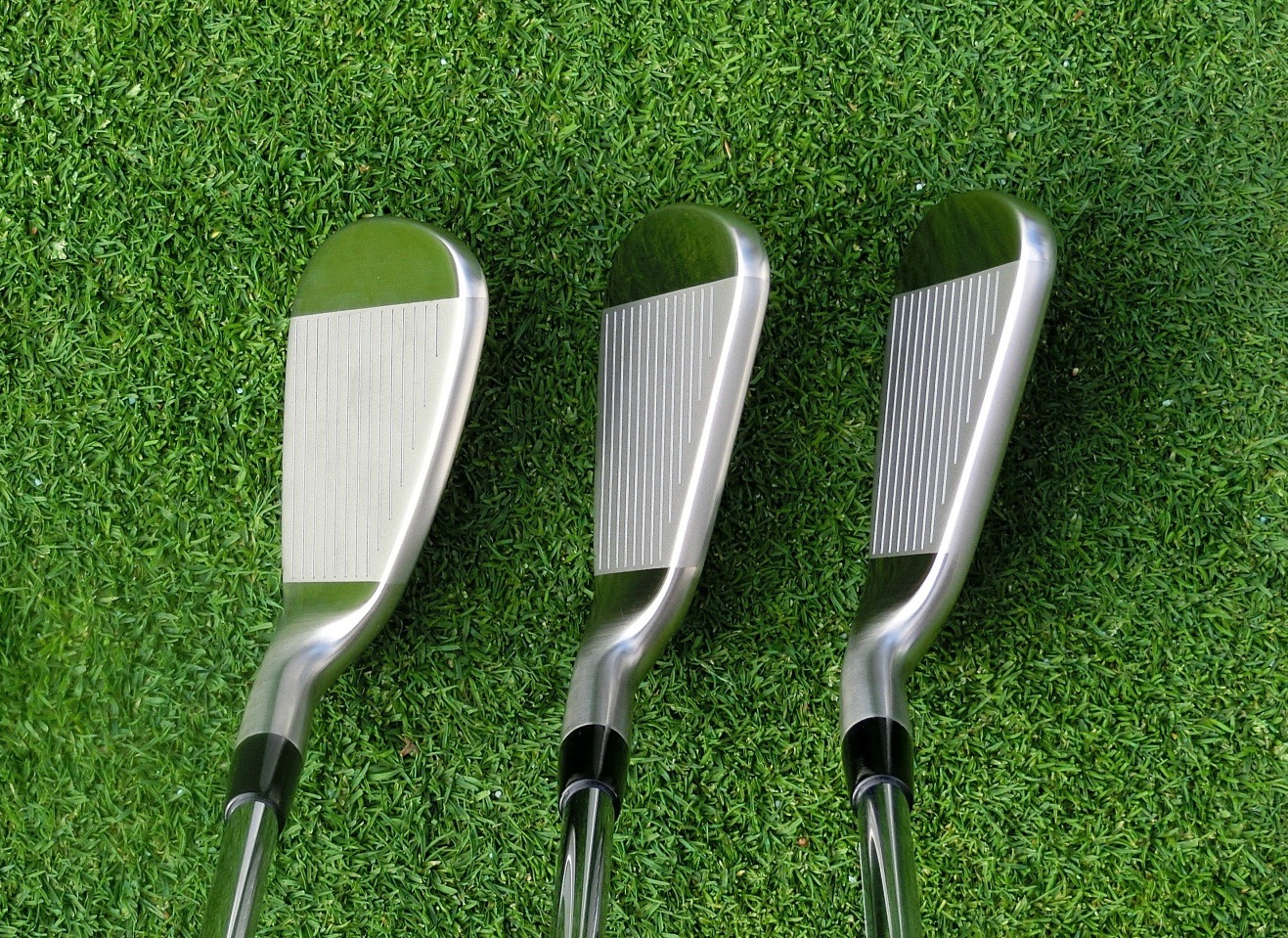
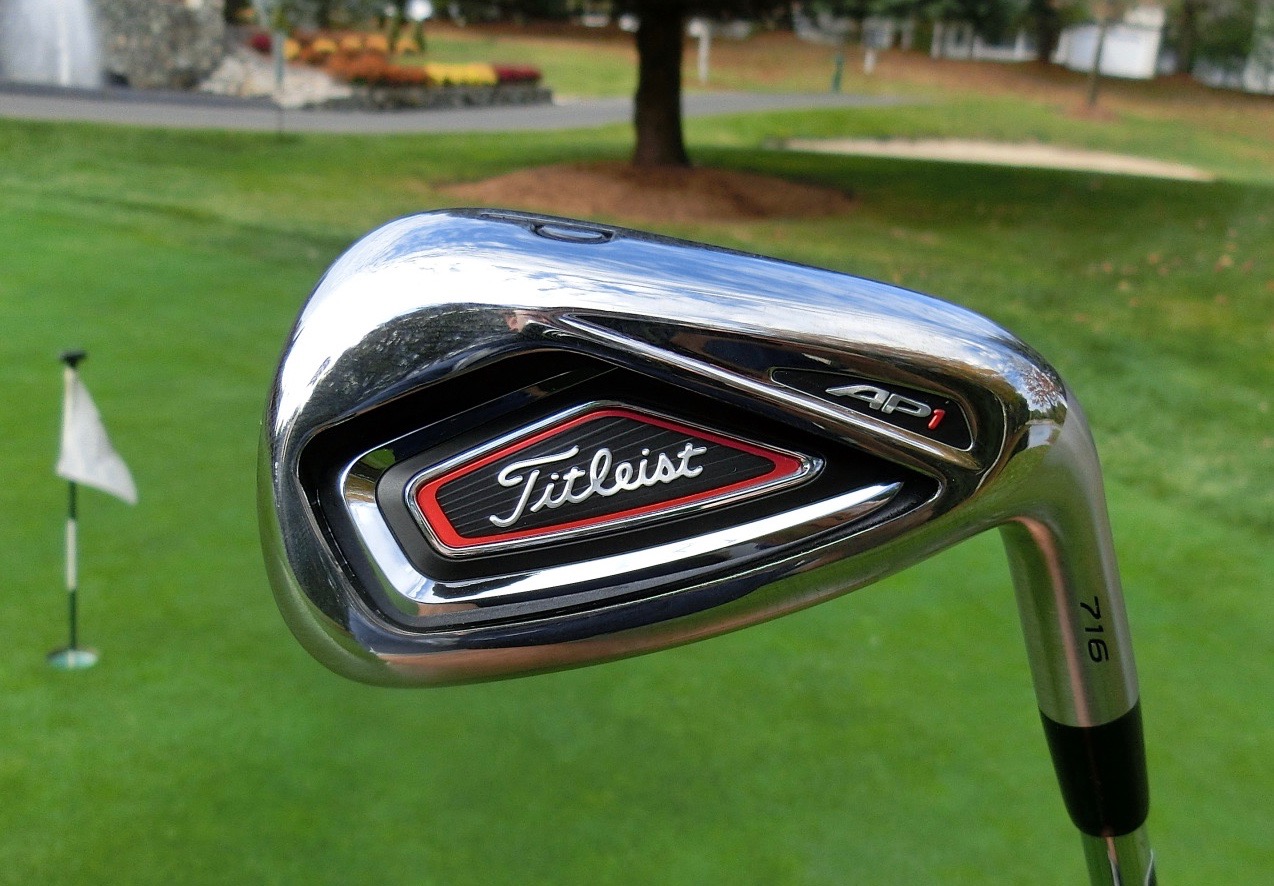
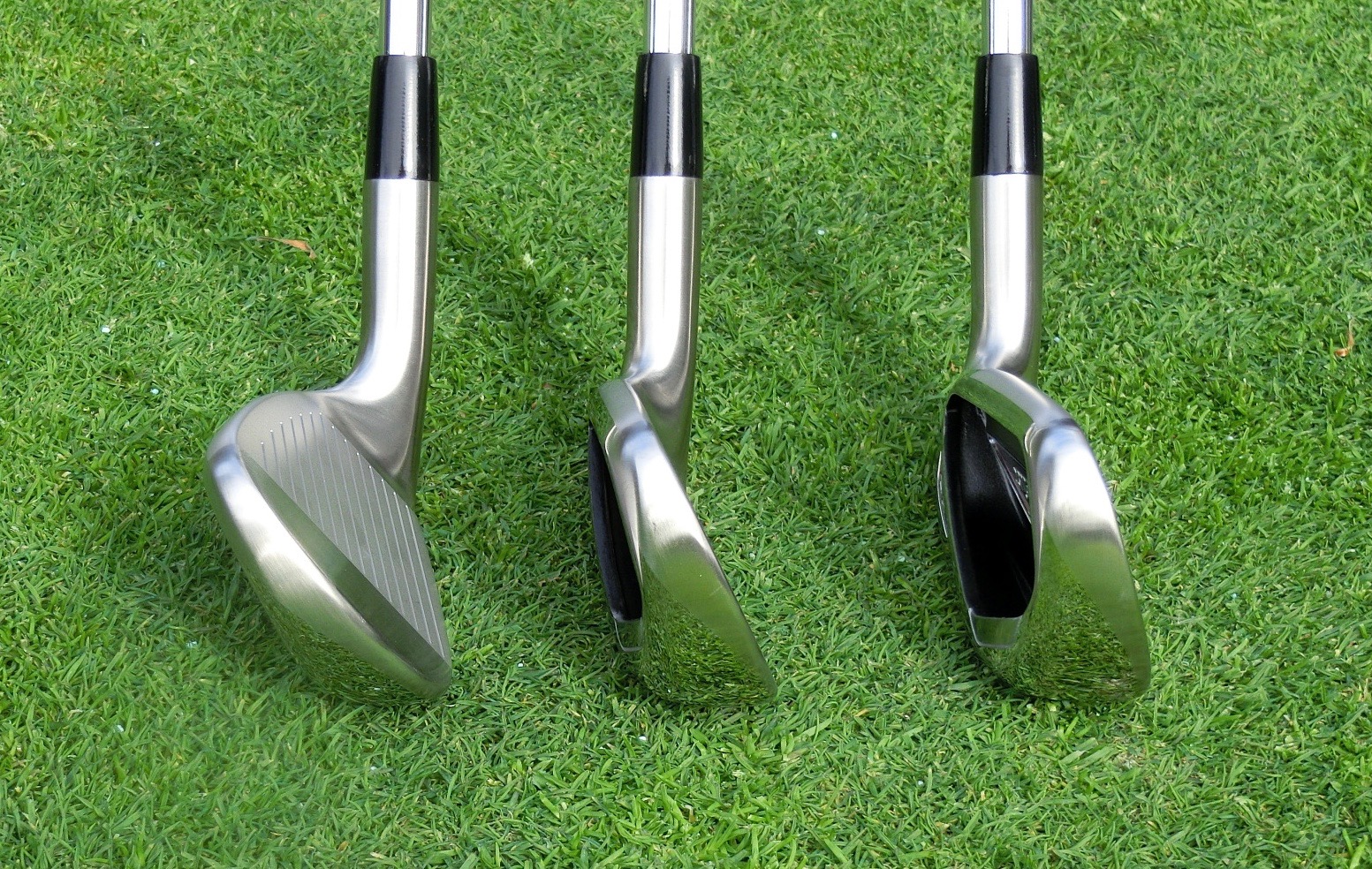
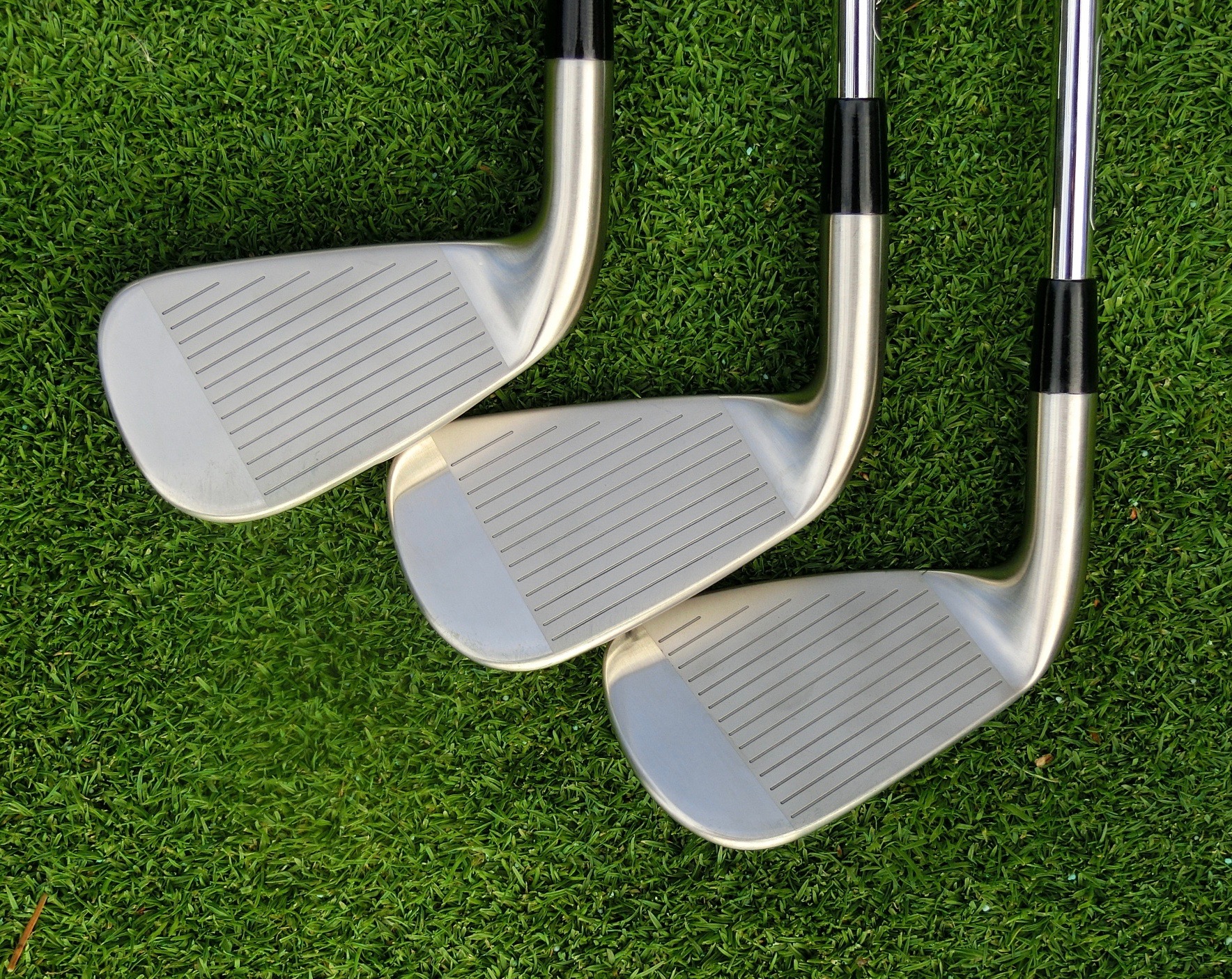
Great review!
I’m likely getting these irons this offseason (I’m in NY) so this review was very helpful.
One thing that I was curious about. You wrote that pros and scratch golfers possibly wouldn’t use these irons because with their swing speed, the ball would launch too high. At what swing speeds would you say the ball would launch too high?
“If a head has a lower center of gravity and launches higher, companies like Titleist lower the head loft to get the same optimum launch angle.”
If that’s the case, then why not drop the 3i below 19 degrees? Do you really need 9 clubs between 19 and 47 degrees of loft? How are the distance gaps on these things?
What’s Titleist’s thinking? Ditch the 60 degree wedge? That no one will play the 3 iron anyhow?
Great review!! Really explained a lot about the clubs including why manufacturers decrease loft (always laugh at that one) as well as outlining your impression of the shafts used in the clubs. I’m starting to look at these along with similar other clubs (Ping I, JPX 850 forged, etc.) and look forward to trying them soon. Granted New England weather limits my ability to get out at this time of year, but a quiet round in cold temperatures is really enjoyable.
I’m not sure about at what swing speed would launch too high. There are a lot of factors. It was more of a general statement because better players tend to have higher swing speeds and tend to stay away from higher launching irons and hybrids.
I wrote the JPX 850 Forged review here http://thesandtrap.com/b/clubs/mizuno_jpx-850_forged_review. I would say the 716 AP1 feel a bit better at impact on the good hit than the JPX 850 forged. They are both nice irons though.
Hi! Im 13 handicap, i like forgivenes irons. These irons are fit to me?
would have liked some input on the graphite shafts in senior flex
But overall am looking to buy a set of ap1’s
Just ordered these. I’m a former major college player….now pushing 5 handicap due to not playing for 20 years while my kids grew up. BUT…a few comments.
Forged is over-rated. “That soft forged feel” does not improve your handicap. Do yourself a favor and get cast clubs allowing more forgiveness.
“Working the ball” with MB irons has no basis in physics. I’m a mechanical engineer and I can’t figure it out. I’ve never held a club I couldn’t cut or hook or knockdown at my preference.
Thanks for the explanation Scott on the reason clubs are so dramatically de-lofted these days. Kinda embarrassed I didn’t figure that one out. Lengthening clubs drives me nuts though. My last set was 1/2 longer and I didn’t know it until after they arrived at my door. Ugh….should have shortened them and adjusted the lie I guess.
Lastly, the golf industry should do us all a favor and quit calling perimeter weight clubs “game improvement” and saying ridiculous things like they are more suited for high handicappers like 10-25 hdp. Everyone is looking for game improvement….including Zac Johnson and Ben Curtis….who played AP-1’s to major championships.